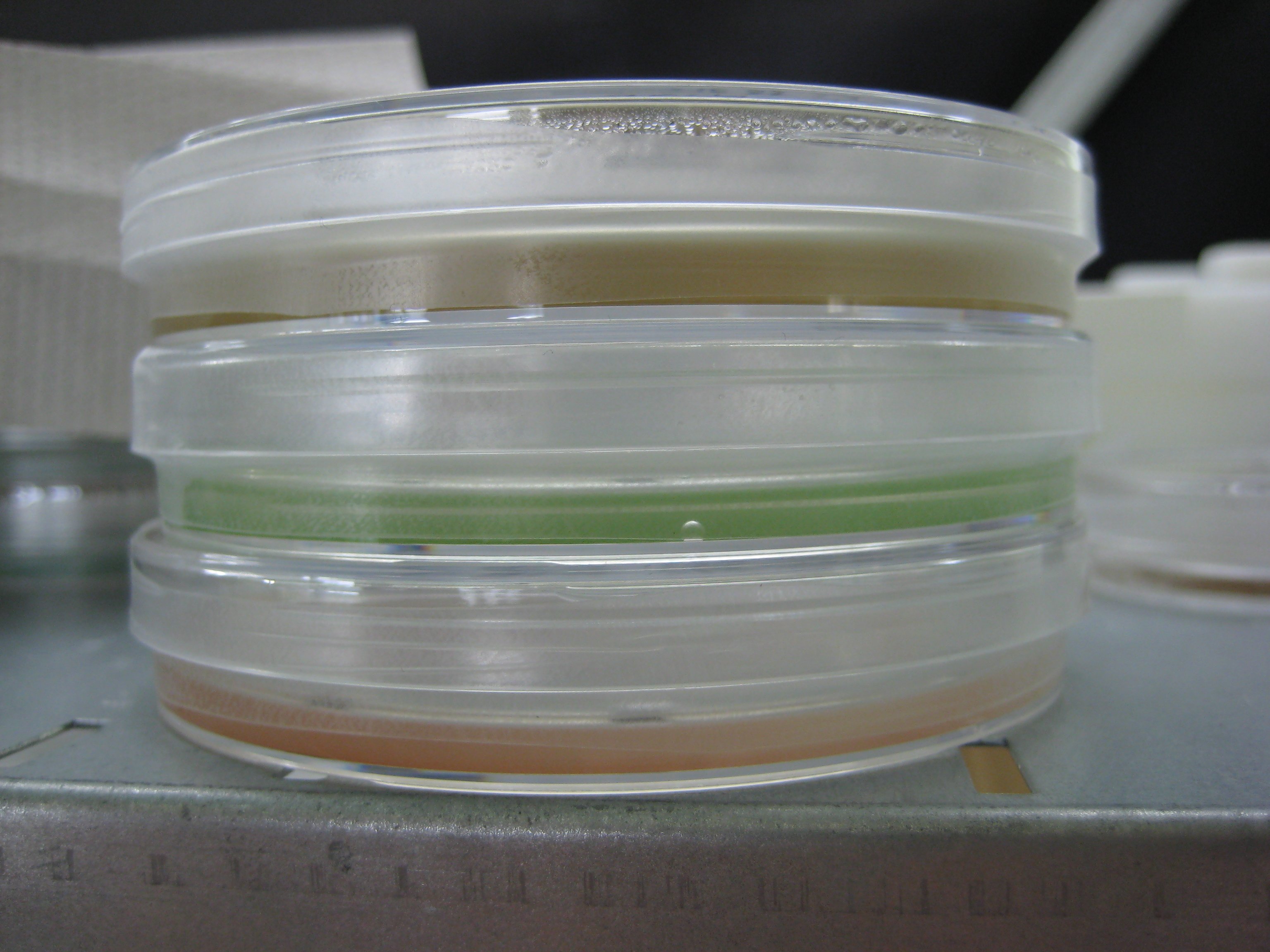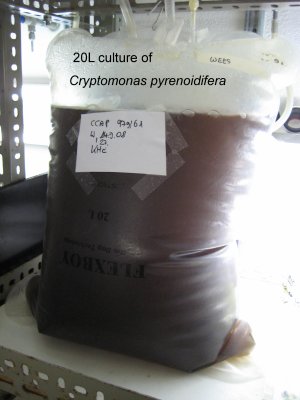
Ecology and Distribution
Cryptophyte algae thrive in all kinds of aqueous
habitats – marine, brackish, freshwater or even in snow (Klaveness 1988;
Javornický and Hindák 1970). As photosynthetic
organisms they contribute to carbon dioxide fixation and as non-toxic planktonic
flagellates they constitute important prey in the food chain. Zooplankter such as e.g.
dinoflagellate or ciliate species feed from cryptophytes (Klaveness 1988;
Pedrós-Alió et al. 1995; Tirok and Gaedke 2007). The formation of palmellae,
accumulations of cells embedded in mucus, may represent a protection
against such predators (Klaveness 1988). Due to an either red or
blue phycobiliprotein as a light harvesting complex for photosynthesis cryptophytes
can utlilize light at low intensities (Gervais 1997; Hammer et al. 2002). In addition
to the biliprotein, the plastids contain chlorophylls a and c2 and
xanthophylls (Jeffrey 1976; Hill and Rowan 1989). Different combinations and/or
concentrations of these pigments cause a variety of
brownish, reddish, or blueish tints (Butcher 1967; Huber-Pestalozzi 1950).
 Most cryptophyte
species are photosynthetic, but some lost their photosynthetic pigments and returned
to a heterotrophic mode of nutrition under retention of a leucoplast (Sepsenwol 1973;
Hoef-Emden 2005). For some freshwater species, bacterivory has been reported (Tranvik et al.
1989; Marshall and Laybourn-Parry 2002). The phagotrophic Goniomonas is the only
known cryptophyte genus without a plastid (McFadden et al. 1994a).
It possesses a cytostome to take up food and usually does not swim in the water column,
but glides along substrates (Mignot 1965).
Most cryptophyte
species are photosynthetic, but some lost their photosynthetic pigments and returned
to a heterotrophic mode of nutrition under retention of a leucoplast (Sepsenwol 1973;
Hoef-Emden 2005). For some freshwater species, bacterivory has been reported (Tranvik et al.
1989; Marshall and Laybourn-Parry 2002). The phagotrophic Goniomonas is the only
known cryptophyte genus without a plastid (McFadden et al. 1994a).
It possesses a cytostome to take up food and usually does not swim in the water column,
but glides along substrates (Mignot 1965).
Cryptomonads (including Goniomonas species) are almost always present in aqueous water samples. The genus Cryptomonas is restricted to freshwater habitats and comprises bright brownish, dark brownish to olive coloured species (Klaveness 1988; Hoef-Emden and Melkonian 2003). Cryptomonas populations can be found throughout the year in lakes, often forming peaks in winter (Klaveness 1988). Globular resting cysts surrounded by a thick cell wall facilitate survival under unfavourable conditions (Lichtlé 1979, 1980). Several species migrate vertically in the water column and accumulate close to the chemocline of lakes at greater depths (Pedrós-Alió et al. 1995; Gervais 1997, 1998). Thus, in water samples drawn only from the epilimnion (the top-most water layer below the surface in stratified lakes), a lake's Cryptomonas populations may be largely under-represented. Whereas blue-green genera such as Chroomonas are also often present in freshwater habitats, albeit usually less abundantly than Cryptomonas, reddish genera like Rhodomonas are rare.
Concerning genera, perhaps also concering species, diversity of cryptophytes in marine habitats seems to outweigh diversity of cryptophytes in freshwater (Clay et al. 1999; Novarino 2003). Marine as well as freshwater cryptophytes may form blooms, but different from toxin-producing dinoflagellates or Cyanobacteria, cryptophyte blooms are not known to cause harm (Pedrós-Alió et al. 1987; Pithart 1997; Hammer et al. 2002; Al-Najjar et al. 2007).